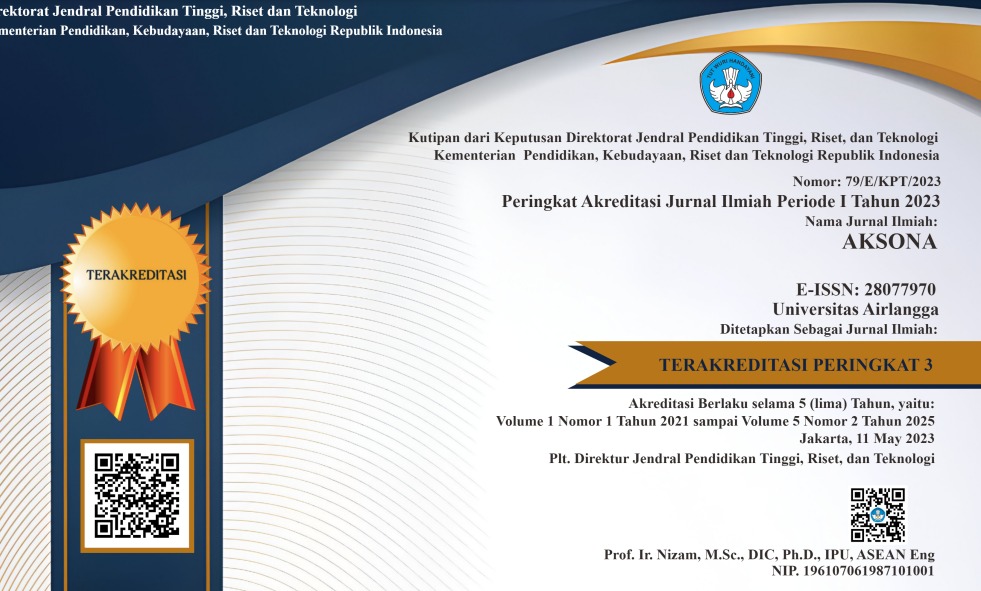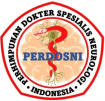In Silico Analysis of Pongamia pinnata to Inhibit Neuronal Apoptosis after Ischemic Stroke via NMDAR and Caspase-3
Downloads
Highlight:
- The potential of Pongamia pinnata as an inhibitor of apoptosis in ischemic stroke has never been evaluated before.
- Pongamia pinnata has potential to inhibit neuronal apoptosis via NMDAR and Caspase-3 in ischemic stroke.
- Karanjachromene has the best binding interaction to inhibit NMDAR.
ABSTRACT
Introduction: One of the cardiovascular diseases with the highest mortality rate is stroke. Stroke is the second-leading cause of death worldwide. Each year, 12.2 million new cases of stroke occur, of which 7.6 million are ischemic strokes. In ischemic stroke, there are several pathways that cause neuronal apoptosis. The activity of NMDAR and caspase-3 is one of the pathways. Pongamia pinnata phytochemicals have a neuroprotective function against neurological disorders. However, its use as an inhibitor of apoptosis in ischemic stroke has never been evaluated before. Objective: This research was designed to evaluate the phytochemicals of Pongamia pinnata as inhibitors of neuronal apoptosis in ischemic stroke using an in silico study. Methods: This study used four main phytochemicals of Pongamia pinnata, namely Karanjin, Karanjachromene, Pongapin, and Pongachromene. The protein targets for neuronal apoptosis were NMDAR and caspase-3. The molecular docking processes were ligand preparation, protein preparation, grid box determination, molecular docking, and visualized molecular docking. Results: In silico results showed that at NMDAR target proteins, Karanjin, Karanjachromene, Pongapin, and Pongachromene have binding energies of -5.12, -5.83, -5.03, and -5.13 kcal/mol. At protein targets, Caspase-3, Karanjin, Karanjachromene, Pongapin, and Pongachromene have binding energies of -4.87, -4.98, -4.88, and -5.08 kcal/mol. Conclusion: The phytochemicals of Pongamia pinnata have the potential to inhibit neuronal apoptosis via NMDAR and caspase-3 in ischemic stroke. The binding of Karanjachromene to NMDAR demonstrated the compound's best interaction.
Feigin VL, Brainin M, Norrving B, Martins S, Sacco RL, Hacke W, et al. World stroke organization (WSO): Global stroke fact sheet 2022. Int J Stroke. 2022;17(1):18–29.
Mao R, Zong N, Hu Y, Chen Y, Xu Y. Neuronal death mechanisms and therapeutic strategy in ischemic stroke. Neurosci Bull. 2022;38(10):1229–47.
Al Muqarrabun LMR, Ahmat N, Ruzaina SAS, Ismail NH, Sahidin I. Medicinal uses, phytochemistry and pharmacology of Pongamia pinnata (L.) Pierre: A review. J Ethnopharmacol. 2013;150(2):395–420.
Das S, Tiwari GJ, Ghosh A. In silico analysis of new flavonoids from Pongamia pinnata with a therapeutic potential for age-related macular degeneration. 3 Biotech. 2020;10(12):536.
Gnanaraj C, Sekar M, Fuloria S, Swain SS, Gan SH, Chidambaram K, et al. In silico molecular docking analysis of karanjin against alzheimer's and parkinson's diseases as a potential natural lead molecule for new drug design, development and therapy. Molecules. 2022;27(9):2834.
Khaerunnisa S, Suhartatu, Awaluddin R. Penelitian in silico untuk pemula.Surabaya: Airlangga University Press; 2020.
Benet LZ, Hosey CM, Ursu O, Oprea TI. BDDCS, the Rule of 5 and drugability. Adv Drug Deliv Rev. 2016;101:89–98.
Pantsar T, Poso A. Binding affinity via docking: Fact and fiction. Molecules. 2018;23(8):1899.
Wu QJ, Tymianski M. Targeting NMDA receptors in stroke: new hope in neuroprotection. Mol Brain. 2018;11(1):15.
Seillier C, Lesept F, Toutirais O, Potzeha F, Blanc M, Vivien D. Targeting NMDA receptors at the neurovascular unit: Past and future treatments for central nervous system diseases. Int J Mol Sci. 2022;23:10336.
Shen Z, Xiang M, Chen C, Ding F, Wang Y, Shang C, et al. Glutamate excitotoxicity: Potential therapeutic target for ischemic stroke. Biomed Pharmacother. 2022 ;151:113125.
Hackos DH, Lupardus PJ, Grand T, Chen Y, Wang T-M, Reynen P, et al. Positive allosteric modulators of GluN2A-containing NMDARs with distinct modes of action and impacts on circuit function. Neuron. 2016 ;89(5):983–99.
Gill R, Soriano M, Blomgren K, Hagberg H, Wybrecht R, Miss M-T, et al. Role of caspase-3 activation in cerebral ischemia-induced neurodegeneration in adult and neonatal brain. J Cereb Blood Flow Metab . 2002 ;22(4):420–30.
Fan W, Dai Y, Xu H, Zhu X, Cai P, Wang L, et al. Caspase-3 modulates regenerative response after stroke. Stem Cells . 2014 Feb 1;32(2):473–86. 4
Machin A, Susilo I, Purwanto DA. Green tea and its active compound epigallocathechin-3-gallate (EGCG) inhibit neuronal apoptosis in a middle cerebral artery occlusion (MCAO) model. J Basic Clin Physiol Pharmacol. 2021 ;32(4):319–25.
Du J-Q, Wu J, Zhang H-J, Zhang Y-H, Qiu B-Y, Wu F, et al. Isoquinoline-1,3,4-trione derivates inactive caspase-3 by generation of reactive oxygen species. J Biol Chem. 2008 ;283(44):30205–15.
Singh A, Bhatt G, Gujre N, Mitra S, Swaminathan R, Limaye AM, et al. Karanjin. Phytochemistry. 2021 ;183:112641.
National Center for Biotechnology Information. Karanjin. PubChem Compound Summary for CID 100633. 2023
Noor AA, Othman SNN, Lum PT, Mani S, Shaikh MF, Sekar M. Molecules of interest – Karanjin – A review. Pharmacogn J. 2020 ;12(4):938–45.
National Center for Biotechnology Information. Karanjachromene. PubChem Compound Summary for CID 14033983. 2023
Rashid N, Abbasi MSA, Tahir MK, Yusof NM, Yamin BM. Isolation and crystal structure of karanjachromene. Anal Sci X-ray Struct Anal Online. 2008;24:X21–2.
National Center for Biotechnology Information. Pongapin. PubChem Compound Summary for CID 3083586. 2023
Roy R, Pal D, Sur S, Mandal S, Saha P, Panda CK. Pongapin and Karanjin, furanoflavanoids of Pongamia pinnata, induce G2/M arrest and apoptosis in cervical cancer cells by differential reactive oxygen species modulation, DNA damage, and nuclear factor kappa-light-chain-enhancer of activated B cell signal. Phyther Res. 2019;33(4):1084–94.
Sharma R, Williams IS, Gatchie L, Sonawane VR, Chaudhuri B, Bharate SB. Furanoflavones pongapin and lanceolatin B blocks the cell cycle and induce senescence in CYP1A1-overexpressing breast cancer cells. Bioorg Med Chem. 2018;26(23–24):6076–86.
Roy R, Mandal S, Chakrabarti J, Saha P, Panda CK. Downregulation of hyaluronic acid-CD44 signaling pathway in cervical cancer cell by natural polyphenols plumbagin, pongapin and karanjin. Mol Cell Biochem. 2021;476(10):3701–9.
National Center for Biotechnology Information. Pongachromene. PubChem Compound Summary for CID 14033985. 2023
Afrin S, Muhit MA, Sohrab MH, Hasan CM, Ahsan M. Antioxidant, thrombolytic, antimicrobial and cytotoxic activities of flavonoids isolated from the root bark of pongamia pinnata. Dhaka Univ J Pharm Sci. 2020;19(1):1–8.
Copyright (c) 2023 Muhammad Ja'far Shodiq, Farmindo Hartono, Siti Khaerunnisa, Abdulloh Machin

This work is licensed under a Creative Commons Attribution-ShareAlike 4.0 International License.





















